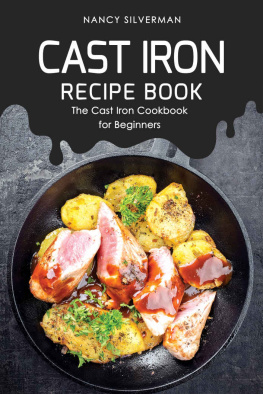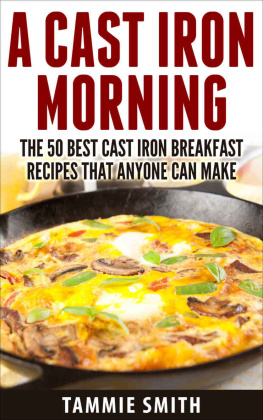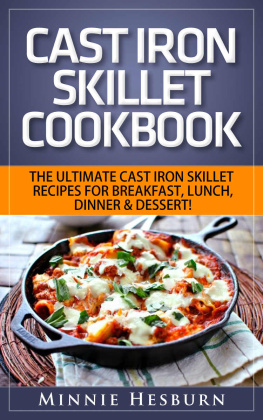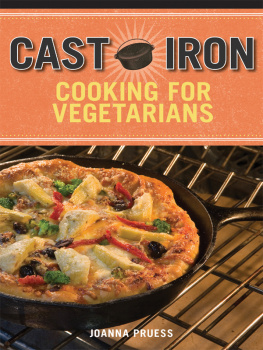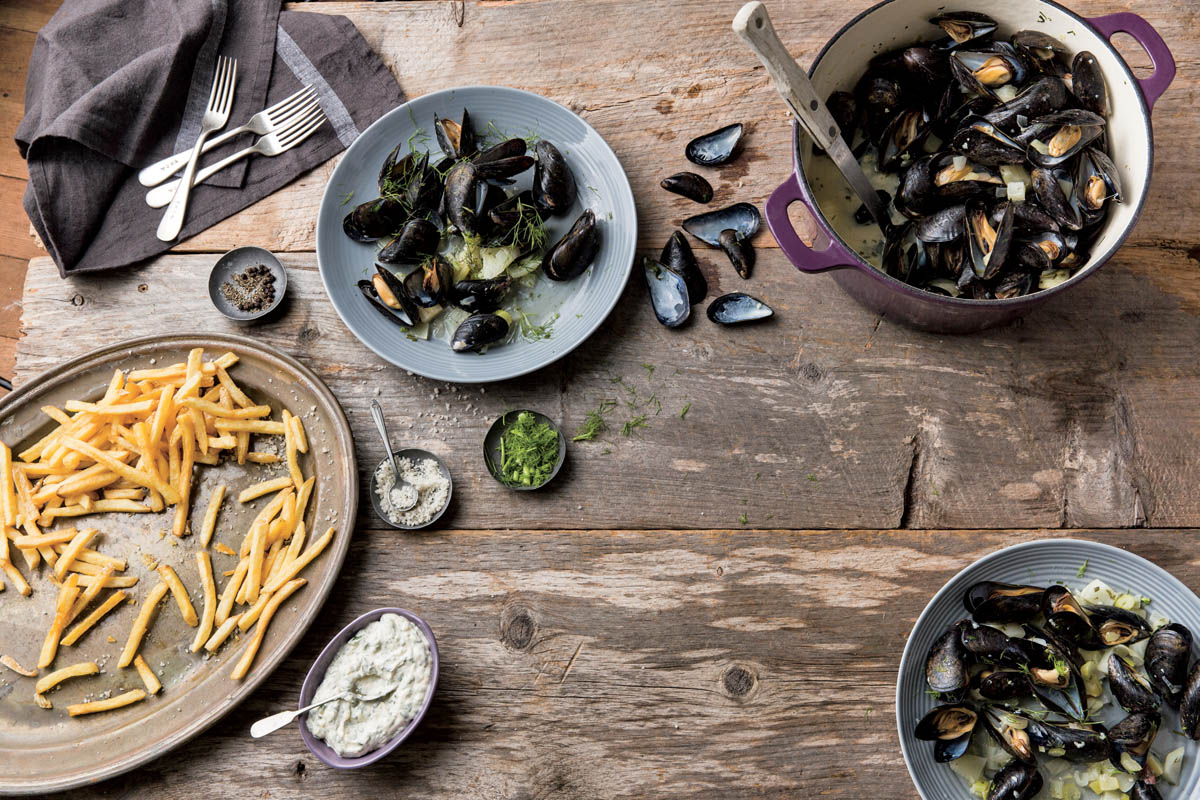Contents
Introduction
All across America, there are cast-iron pans displayed proudly on pot racks in kitchens, decoratively hung from nails in barns, nestled in cupboards, and tucked away in attics and basements.
There are pans that are used daily and with love and pans that are waiting to be taken home from the shop or simply reclaimed. They are for sale everywhere, from the finest cookware shops to the funkiest flea markets. With price tags that range from under $20 to well over $200, theres a pan out there for every wallet.
Cast-iron pans hold memories of meals cooked and of families gathered. They can last for generations, so even the most neglected just need some attention and theyre ready to get back to work.
A cast-iron pan is easy to use, easy to care for, and easy to love.
Why and How to Buy Cast Iron
You may already have a set of cast-iron cookware, or you may be asking yourself, why should I invest in a cast-iron pan? For that matter, why invest in a cast-iron pan cookbook?
The unique properties of cast iron make it ideal for baking, sauting, frying, slow cooking, and more. A well-made pan is virtually indestructible and when properly seasoned is nonstick. Iron is almost endlessly recyclable, so not only will it last you a lifetime, but you can feel good knowing it never has to end up in a landfill. A good pan will also add trace amounts of iron a necessary nutrient to your diet.
Cast iron heats slowly and holds that heat. Its a bit of a myth that it holds heat evenly, though. The pan will always be hotter directly over the burner. (You can sprinkle some flour in your pan and place it on a burner to see. The flour will darken first where the pan gets hottest. ) To remedy this, consider purchasing a heat diffuser.
Recipes that are designed for cast iron take into account slower heating times and longer heat retention. Where glass will keep your baked goods light, cast iron is the choice for when you want a screaming hot pan for searing or a terrific golden crust.
The pans work on gas and electric stoves. They can go in the oven and can be used on induction burners and direct heat; outdoors, too, on a grill, hearth, or open fire. Many recipes in this book include directions for outdoor cooking.
At the most basic level, a cast-iron pan is just that: a pan made of iron that was cast in sand-blast molds, then polished. The tools have been slightly upgraded, but the manufacturing technique is the same as it has been for hundreds of years.
When buying cast iron, you will notice that theres only one major manufacturer left in America: Lodge. However, there are several very popular vintage brands you can buy online or find at garage sales or thrift shops. Happily, there are also at least two small very small; they have waiting lists for their pans craftsmen making pans to order: Finex in Portland, Oregon, and Borough Furnace in Syracuse, New York. They are worth seeking out.
Whether you decide to buy a brand-new pan or go with something vintage, think about what shapes and sizes you need. For the purposes of this book, you should have a 10- and a 12-inch skillet and 5- and 8-quart Dutch ovens (if you can only buy one size of each, go with the larger choices). Always consider the weight of a pan when purchasing. If its too heavy to pick up, you arent going to use it.
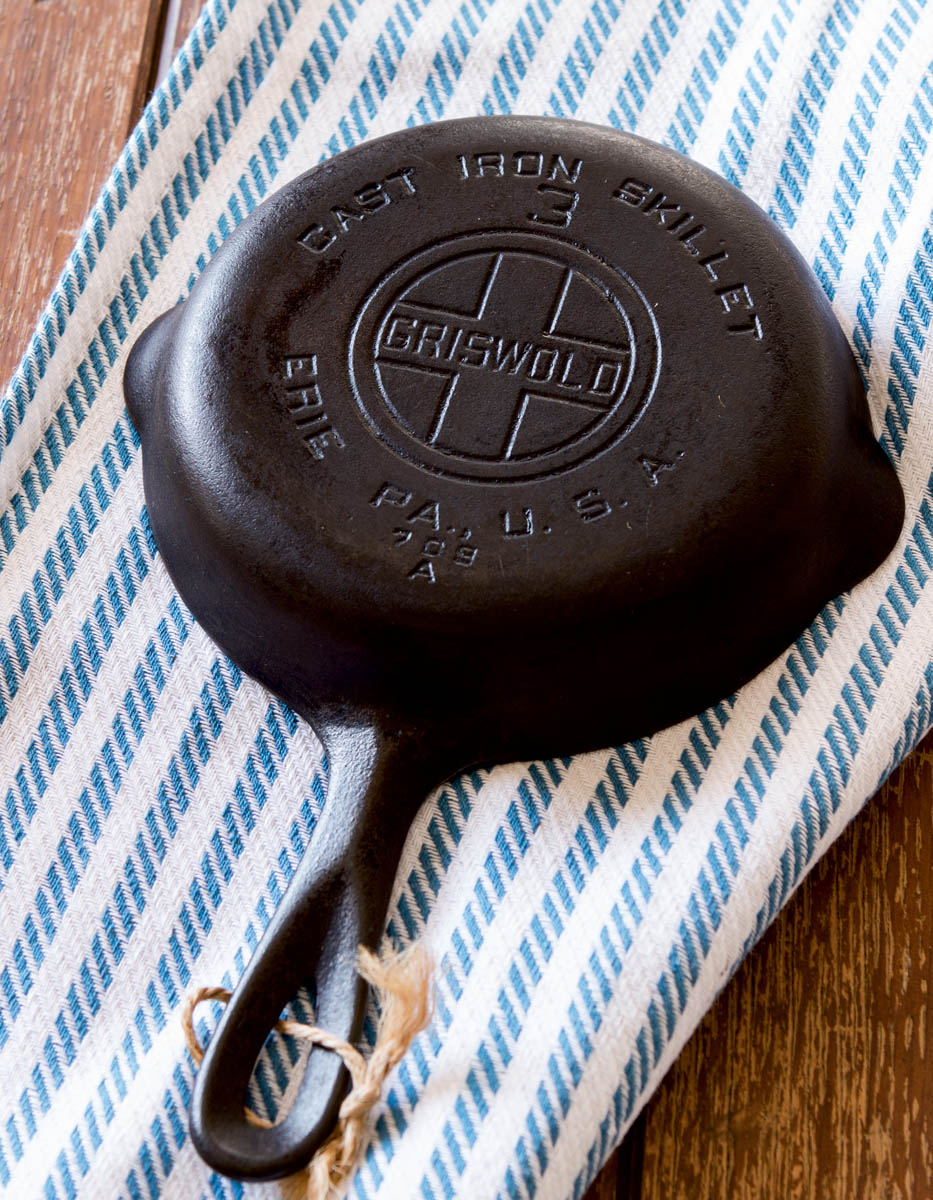
Collectors of vintage pots and pans look for certain manufacturers, such as Griswold. The beauty of collecting cast iron is that your investment isnt just for show; it can be used and treated like any other cast-iron pan in your kitchen.
Shapes & Sizes
Cast iron comes in a variety of shapes and sizes. Here are some of the most common, and a few uncommon options.
Skillet. Also known as a frying pan, a skillet has a handle, a wide cooking surface, and low sides. Its ideal for sauting, searing, pan frying, broiling, and some baking.
Grill pan. This is a skillet with raised ridges inside the pan that add the look of grill marks to cooked food. The benefit to a grill pan is that whatever you put in it isnt going to cook in its own fat or moisture. The drawback is that this pan will need to be reseasoned more often than a flat-bottom pan, since sauces and fats pool in the grooves, requiring additional cleaning that often takes off the seasoning.

Dutch oven. A large, deep pot with a tight-fitting lid, a Dutch oven is sometimes called a cocotte or casserole dish. It can be round, oval, or heart-shaped, and some are made with legs for outdoor use. Dutch oven sizes are typically measured in quarts. The recipes in this book that serve four to six people work best in a 5-quart pot; use an 8-quart pot for larger recipes. The recipes in this book were written for seasoned, raw iron pans, but for the most part they can be made in enameled cast iron as well. You can cook acidic foods and boil water in enameled cast iron, which are not recommended in seasoned cast iron.
Stovetop accessories. Many stoves offer the option of a cast-iron grill or griddle, custom built to fit over an oval-shaped burner in the center of the stove top. These, too, need to be seasoned and treated the same as any other piece of cast-iron cookware.
Griddle. This is a rectangular flat surface, with grilling ridges on one side. It is designed to rest over two or more burners and is perfect for making multiple pancakes or fried eggs. The grill side is ideal for steaks, burgers, and whole vegetables.
Outdoor pots. All well-seasoned cast iron can be used outdoors, but some pots are designed specifically for grills, hearths, and campfires. They can come in sizes up to 40 gallons and typically have legs or a handle for hanging. These pots can be found online and at agricultural and farming supply stores. Enameled cast iron should be avoided.
Specialty pans. There are a few novelty cast-iron pans on the market. The classics are the bleskiver pan (for creating the round, Danish popover-style doughnut) and the corn stick mold, but you can also find pans divided into wedges for corn bread, or in the shape of a cactus, and theres one midwestern artist making pans in the shape of all 50 states.


